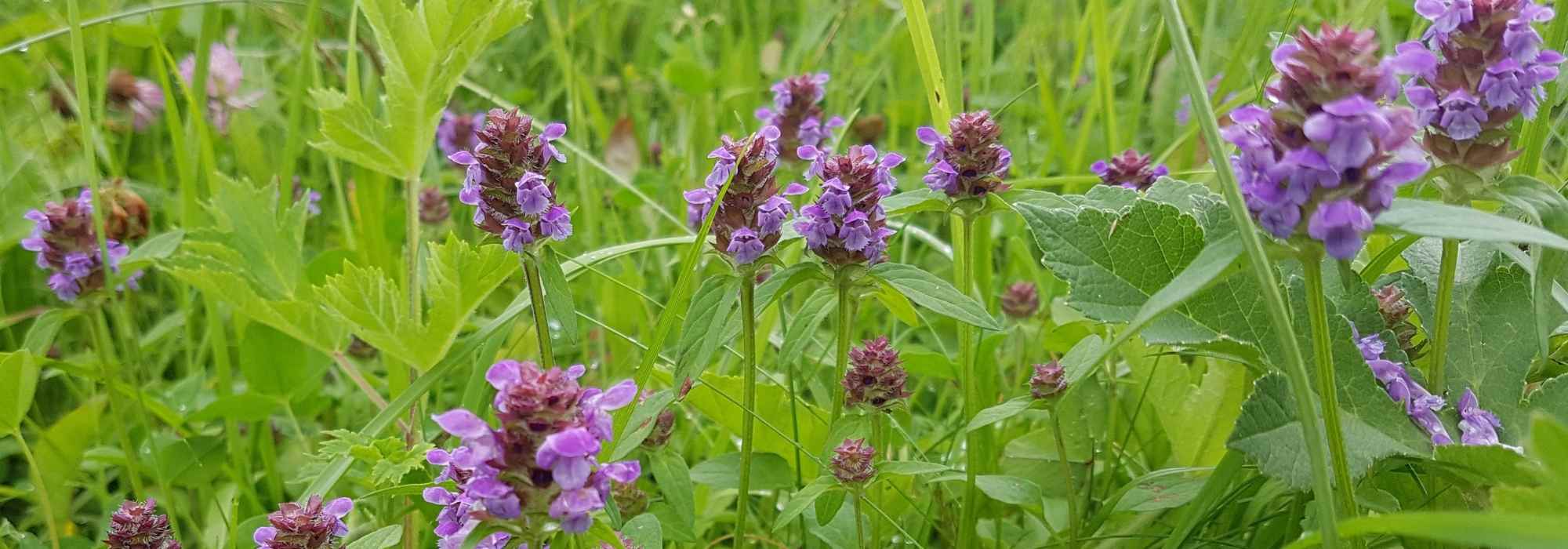
Prunella, Brunelle : plant, cultivate
Contents
Prunella in a nutshell
- It is a vigorous perennial ground cover plant with beautiful dark green semi-evergreen foliage
- It quickly forms very floriferous mats not exceeding 25 cm in height
- From May to August, it produces compact spikes laden with small melliferous flowers in blue, pink, or white
- Hardy, it is easy to establish in a not too shady corner or even in the sun when the soil is sufficiently cool
- It is ideal as an alternative to lawn, at the edge, in rockeries, or even in window boxes and pots
A word from our expert
Prunella, also known as self-heal, is an interesting perennial ground cover plant for its lovely summer flowering and semi-evergreen fir-green foliage.
Well established in cool soil, in sun or light shade, it forms dense carpets topped with very bright spikes of blue, pink, or white flowers from May to September depending on the varieties. Like the Prunella grandiflora (large-flowered self-heal), the most common in our gardens, it makes an ideal cover to edge a perennial bed, under trees or bushes, in pots, troughs, and window boxes. Meanwhile, Prunella vulgaris, the common self-heal, equally charming, is an edible species valued for its medicinal properties.
Easy to grow, low maintenance, and very hardy, Prunella avoids the chore of weeding and can even effectively replace grass in cool corners.
Discover this useful and highly floriferous ground cover!

Prunella grandiflora
Description and Botany
Botanical data
- Latin name Prunella
- Family Lamiaceae
- Common name Self-heal, Prunella
- Flowering May to September
- Height 0.15 to 0.30 m
- Exposure Sun, partial shade
- Soil type Rich, cool, well-drained
- Hardiness –15 °C and below
The Prunella, also known as self-heal, is a semi-evergreen perennial from the Lamiaceae family, which includes lamiums, sages, mints, and thymes. The genus Prunella comprises seven perennial species that grow in dry meadows and rocky, mountainous areas across Europe, Asia, Africa, and North America. The Prunella grandiflora, the large-flowered self-heal and its cultivars, is the most common species found in our gardens. There is also Prunella vulgaris, the common self-heal, which has medicinal properties. It is typically found in fields or pastures.
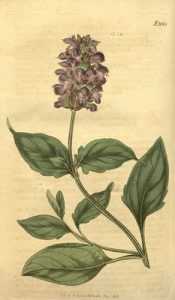 Prunella grandiflora, botanical illustration, 1817
Prunella grandiflora, botanical illustration, 1817
From a running stump, the plant develops a low, compact, and ramified herbaceous tuft, 15 to 30 cm in height when in bloom. The plant eventually forms a spreading tuft. This ground cover tends to spread over time through creeping stems, leafy stolons that root upon contact with the soil, making it ideal for rockeries, sunny borders, or even in window boxes and pots.
The square stems, whether upright or prostrate, bear semi-evergreen foliage composed of opposite, ovate leaves, 3 cm wide, entire or dentate, petiolate, strongly veined, and rough. They are a beautiful dark green. Very hardy, this foliage disappears in excessively harsh winters.
The flowering of Prunella extends from May to September. Short, compact flower spikes rise well above the foliage. They bloom as small tubular and bilabiate flowers measuring 1 to 3 cm, grouped in whorled spikes at the tips of the stems in shades of lavender blue, lilac, pink, or pure white. The corolla is shaped like a wolf’s mouth, consisting of two fused lips, with the upper lip curved like a galea and the lower lip resembling a finely dentate tongue. They are surrounded by brown bracts. They resemble sage flowers.
Nectariferous and melliferous, they attract bumblebees, honeybees, and butterflies.
The fruits are slightly sticky achene, meaning they are divided into four equal parts. Once mature, they are easily dispersed and are appreciated by certain birds.
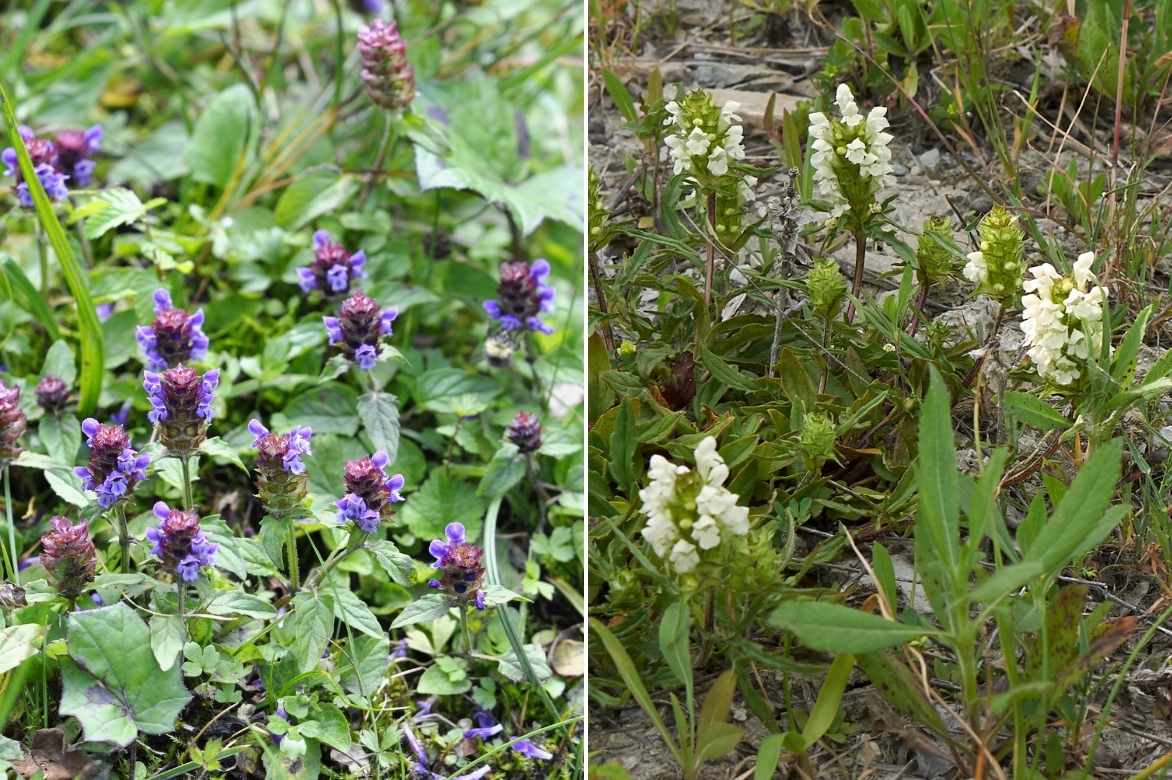 Prunella vulgaris and Prunella laciniata
Prunella vulgaris and Prunella laciniata
Main species and varieties
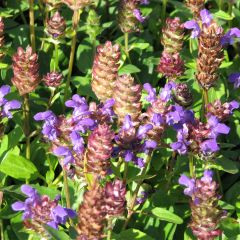
Prunella grandiflora Freelander Blue - Self-heal
- Flowering time June to September
- Height at maturity 15 cm
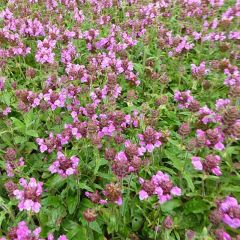
Prunella webbiana Rosea - Self-heal
- Flowering time July to September
- Height at maturity 25 cm
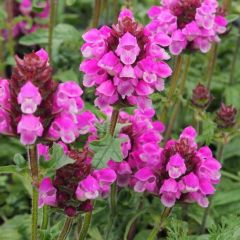
Prunella grandiflora Bella Deep Rose - Self-heal
- Flowering time August to October
- Height at maturity 15 cm
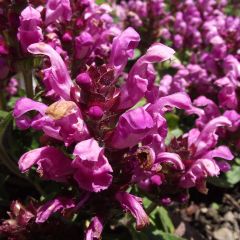
Prunella grandiflora Pink Loveliness - Self-heal
- Flowering time August to October
- Height at maturity 15 cm
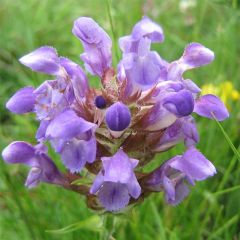
Prunella grandiflora Altenberg Rosa - Self-heal
- Flowering time August to October
- Height at maturity 20 cm
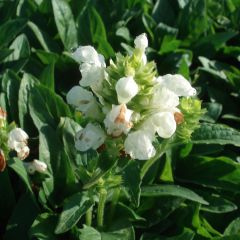
Prunella grandiflora White Loveliness
- Flowering time August to October
- Height at maturity 15 cm
Discover other Prunella
View all →Available in 1 sizes
Available in 1 sizes
Available in 1 sizes
Available in 1 sizes
Available in 1 sizes
Available in 1 sizes
Available in 1 sizes
Available in 1 sizes
Available in 1 sizes
Planting of Prunella
Where to plant the self-heal?
Prunella is an easy-going montane perennial, better resistant to cold (it is hardy below -15°C) than to drought during its flowering period. As it requires constant moisture in summer, it will struggle to grow in a Mediterranean climate, which is too dry and hot.
It thrives in full sun or partial shade in cool but well-drained soil. It tolerates full sun in sufficiently cool soil. It will flourish more in humus-rich soil, although it accepts poor, even calcareous, soils. It will reach its full potential in a partially shaded spot, such as under trees or bushes, and remains cool in summer.
This vigorous ground cover plant helps limit the spread of adventive plants in less-trodden areas of the garden. The self-heal can be mown like a lawn after flowering.
It adorns borders, rockeries, or even window boxes and pots. It also allows for quick colonisation of shrub beds.
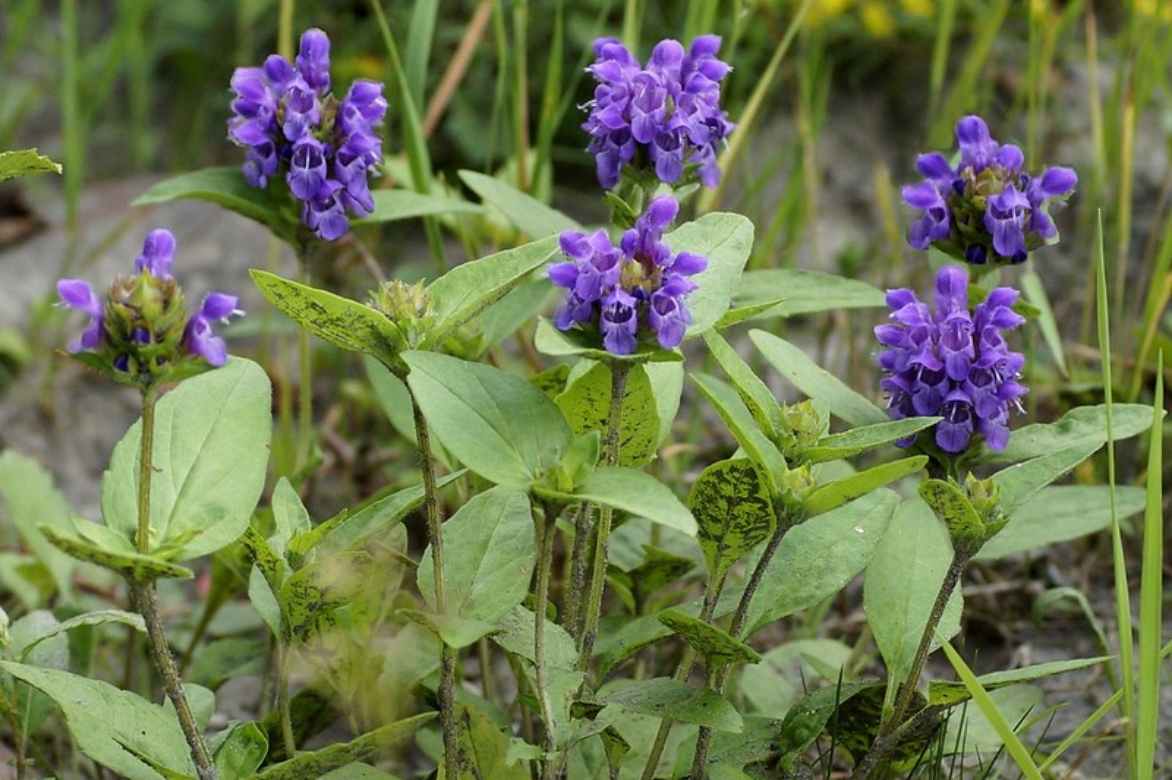
Prunella grandiflora (© Udo Schmidt)
When to plant the self-heal?
Planting of self-heal is done in autumn from September to November or in spring from March to April, outside of frost and drought periods.
How to plant it?
In open ground
Count about 5 buckets per m² to create a beautiful flowering ground cover and cover a nice area.
- Dig a hole three times wider than the root ball
- Add a few handfuls of sand and gravel to ensure good drainage
- Add a bit of compost or potting soil to the planting hole if the soil is too poor
- Place the root ball in the centre of the hole
- Fill in, firm down with your hand, and water generously
- Mulch with a mineral mulch (gravel, pumice, slate, terracotta shards…)
In pots
Prunella enjoys being in pots (about 30 cm in diameter) and window boxes in a substrate that is sufficiently draining to avoid stagnant moisture at the roots.
- At the bottom of a drainage hole pot, spread a good layer of drainage (gravel or clay balls)
- Plant in a mixture of potting soil and compost
- Mulch and water regularly
Cultivation and care
Self-heal requires little care. In the first year following planting, water regularly, as it needs water to establish well. Afterwards, it can tolerate light and temporary drought. Mulch the soil with mineral mulch to reduce watering.
Fertilise occasionally with a handful of compost or other organic fertiliser at the base of the plant.
Remove faded flowers after flowering.
On large areas, mow after flowering to thicken the foliage.
Clean the clump at the end of winter and, if you wish to limit its spread, pull out the excess runners.
In pots, ensure to keep the substrate moist but not waterlogged: allow the compost to dry on the surface between waterings. Twice during the growing season, enrich the soil with a fertiliser for flowering plants to encourage flowering and keep it vigorous.
Never diseased, this plant is, however, susceptible to slugs and snails: follow our advice to protect its spring foliage.
Multiplication
Prunella tends to layer spontaneously. In spring or early autumn, you can take rooted runners to propagate the plant.
- With a spade, separate stems connected to the mother plant
- Unearth the leafy runners
- Replant immediately in moist soil, in a pot or directly in the ground
Associate
With its semi-evergreen foliage depending on the climate, Prunella adorns cool areas and slightly neglected corners of the garden. It is ideal for filling the space left at the base of trees and bushes, in borders, semi-shaded beds, and sufficiently cool rockeries.
It forms a low ground cover that is easy to integrate at the front of borders to create ribbons or in small touches, in front of heucheras or perennial geraniums like the perennial geranium ‘Rozanne’ which produces carpets of blue flowers from late spring until autumn without interruption.
It will edge a border alongside easy-to-grow perennials such as Nepeta ‘Six Hill Giant’ and Phlox paniculata, as well as alchemilla ground covers like Caucasian alchemilla which flowers at the same time.
Under trees or bushes, Brunella is welcome among other ground cover perennials such as Bugle (the Ajuga ‘Atropurpurea’, ‘Princess Nadia‘), Asarum, with its heart-shaped foliage, corydalis, nodosum geraniums, and Vinca minor. Lamiums (Lamium maculatum ‘White Nancy’) or even tiarellas and heucherellas will also be good companions, with beautiful decorative and colourful foliage.
It forms lovely cushions at the base of larger plants, especially at the foot of roses.
It will also create pretty associations with alpine plants such as alyssum, Dianthus erinaceus, or the perennial geranium cinereum.
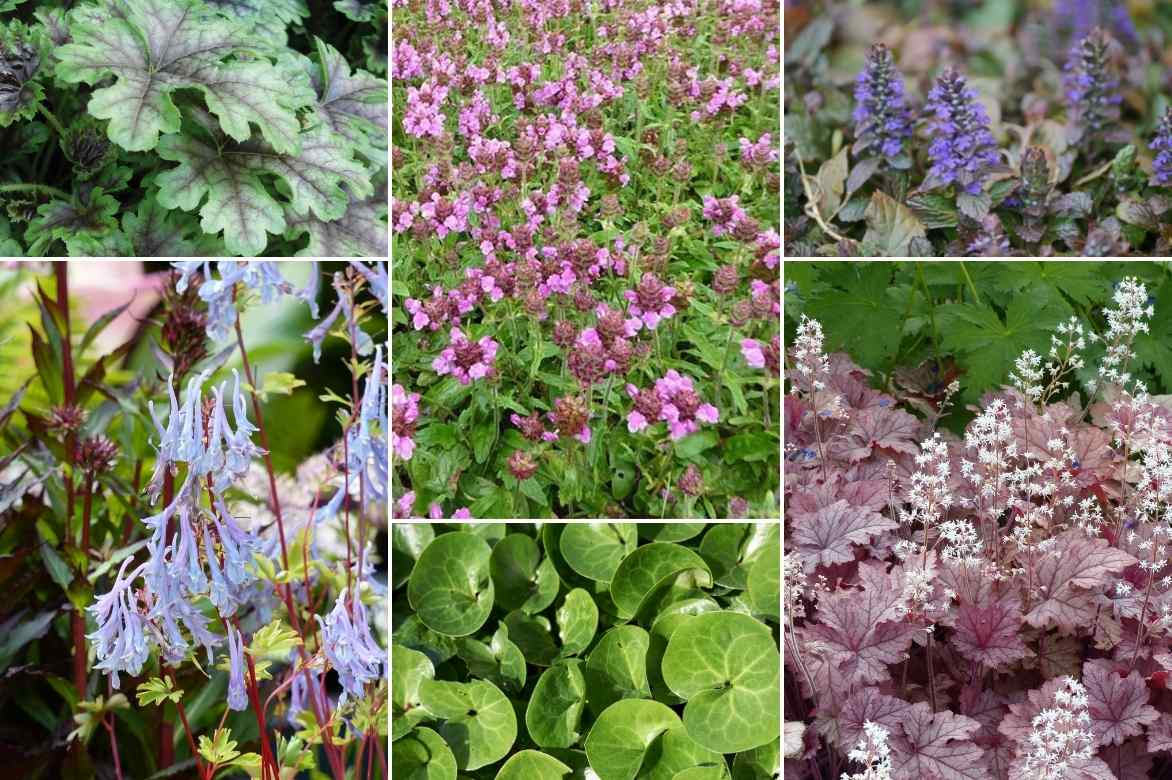
In the centre Prunella x webbiana ‘Rosea’, surrounded by a Heucherella tapestry, Corydalis ‘Blue Line’, Asarum europeum, Ajuga reptans and Heucherellas ‘Honey Rose’,
Did you know?
The leaves and flowering tops of Prunella vulgaris possess therapeutic, astringent, haemostatic, and vulnerary properties (for treating wounds). This medicinal plant is still used today. It contains, among other things, polysaccharides (prunelline), known for boosting the immune system. It also has digestive properties and can be used in infusions, decoctions, or mother tinctures. The leaves have a slight bitter taste that can enhance a salad.
Useful resources
- What good ground cover as an alternative to lawn?
- What to plant under my trees?
- Subscribe!
- Contents


































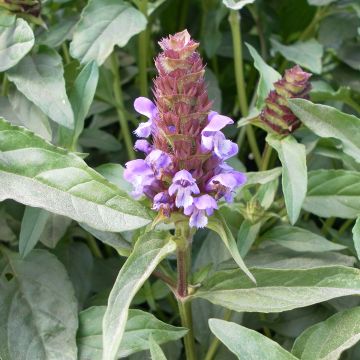
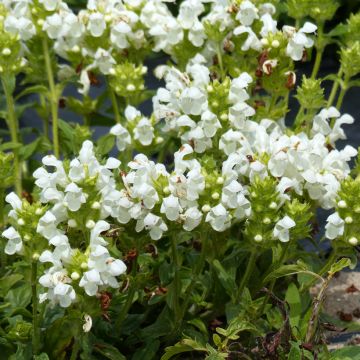
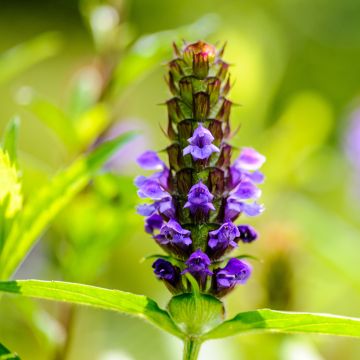



Comments